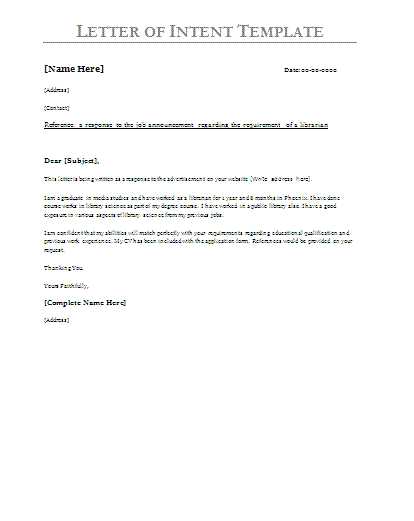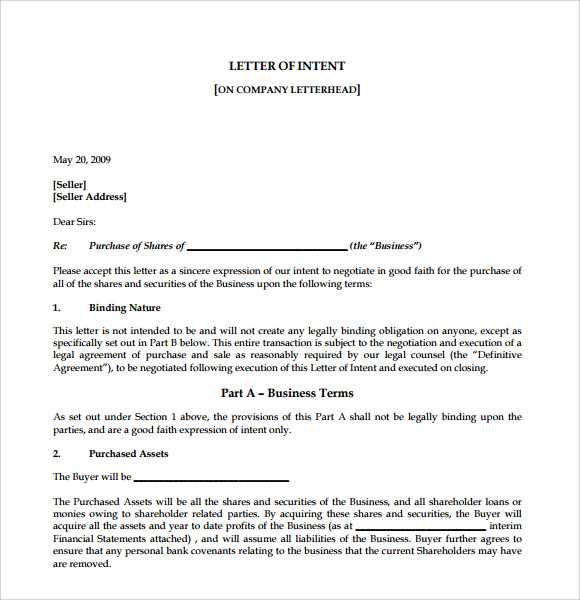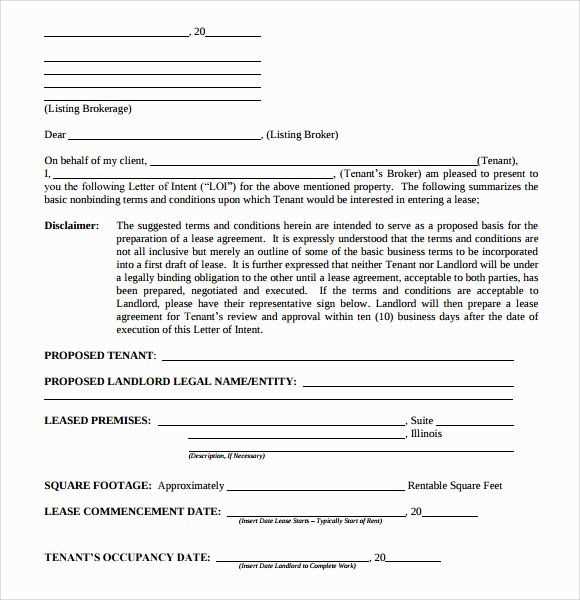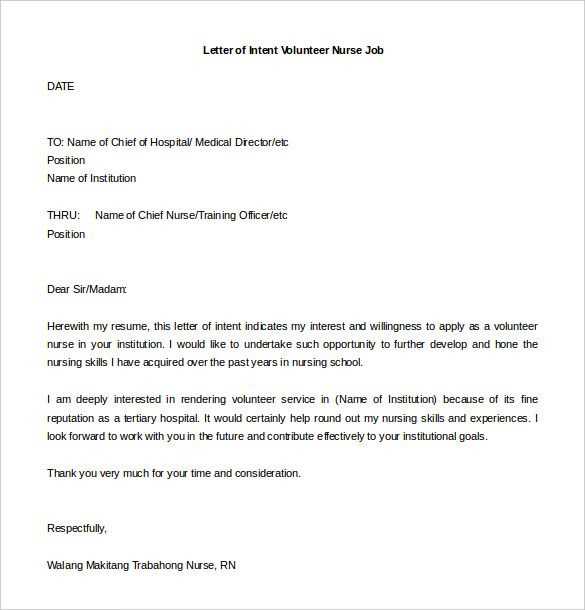Letter of Intent Template for Professional Use

Creating a formal document to express your intentions and outline mutual agreements is essential for smooth and transparent transactions. This written form is commonly used in various scenarios, from business deals to personal arrangements, offering clarity and preventing misunderstandings.
Core Components to Include

When drafting such a document, certain elements are critical to ensuring its effectiveness and accuracy. These parts should reflect the specifics of the agreement while maintaining professionalism and precision.
- Purpose: Clearly state the reason behind the document, whether it’s for a business arrangement, partnership, or collaboration.
- Details of the Agreement: Include all relevant specifics such as timelines, conditions, and responsibilities.
- Signatories: Ensure that both parties involved understand their roles and obligations, and provide space for signatures to validate the agreement.
Structure and Formatting
The format of the document plays an essential role in its readability and formality. The structure should be simple yet detailed, with headings and bullet points where necessary. Each section should flow logically from one to the next, ensuring that no important details are missed.
Customizing the Document

While it’s essential to follow a general structure, the document should be adapted to suit the particular situation. Make sure to adjust wording and include any relevant information specific to the agreement being made. A tailored document ensures that both parties are fully informed and committed to the terms.
Common Mistakes to Avoid

To ensure your agreement holds legal value and avoids potential confusion, avoid these common errors:
- Vague or unclear terms that could lead to misinterpretation.
- Failure to include necessary details like deadlines or specific conditions.
- Not having both parties properly sign and date the document.
By adhering to these guidelines, you can create a document that serves its purpose effectively and professionally, ensuring both parties are on the same page moving forward.
Understanding Professional Agreement Drafts
In many formal negotiations, a written expression of intentions is crucial. This type of document helps ensure that both parties involved clearly understand the terms and conditions of their mutual understanding, providing a foundation for future collaboration or legal agreements. The following sections outline essential components, structure, and tips to consider when creating this kind of document.
Core Components of a Professional Agreement

To make sure the document is clear and effective, include specific elements that communicate all the necessary details. First, outline the purpose of the agreement to make sure both parties are aligned. Then, include key details such as timelines, responsibilities, and obligations. Concluding with a space for signatures formalizes the document and ensures all parties consent to the terms.
Common Pitfalls to Avoid
When drafting such a document, it’s important to avoid vague language, as it can lead to confusion or misinterpretation. Be clear and precise in your wording. Additionally, leaving out essential details or failing to provide signatures can invalidate the agreement or cause problems in the future. Always ensure that every section of the document is addressed and understood before finalizing it.
Though this type of document shares similarities with contracts, it is not legally binding unless it clearly states so, unlike formal contracts. Understanding these differences can help ensure the correct approach is used when drafting.
Lastly, customize your document to fit the specific circumstances. While templates offer a basic framework, personalizing the language and details can make the agreement more relevant and ensure that all necessary elements are covered.